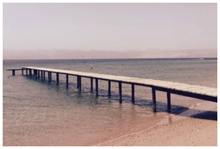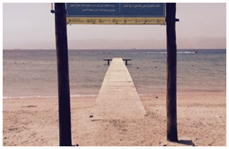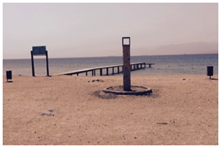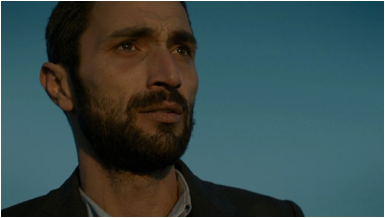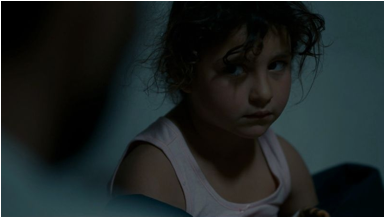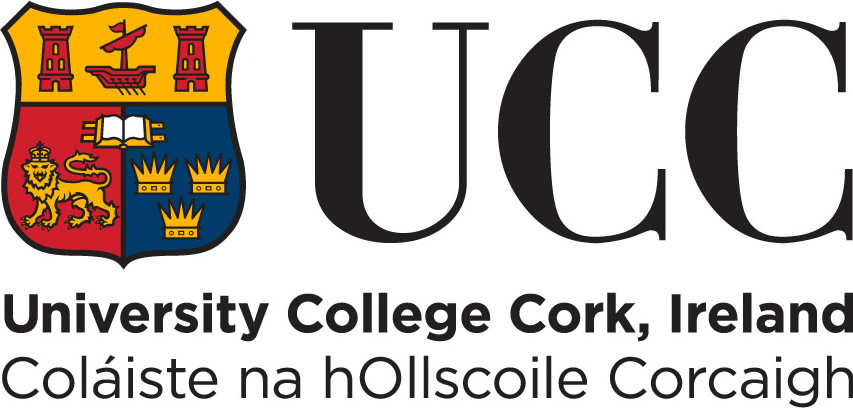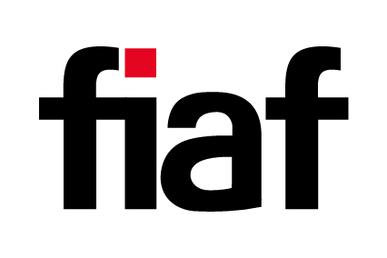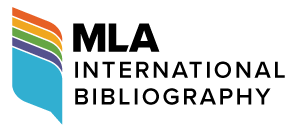Refugee Status: Privileged
Rana Kazkaz
No matter whether we are Algerians, Spanish or French, we are above all Mediterranean and that is our true belonging. It is older than the nations. (Méditerranées, Olivier Py, 2011)
The Backstory
I had been living in Damascus for five years with my husband Anas Khalaf and our two small children when the Syrian Revolution broke out in March 2011. I was born in France, but mainly grew up in the United States. Anas was born in Syria, but grew up in France. As we are both of Syrian origin, we moved to Damascus to create an independent film company. In our own naïve way, we wanted to challenge the rule, imposed under both Assad regimes, that films could only be made if approved by the Syrian Film Commission, the Moassasseh Sooriy Cinamayih, a governmental organisation with a strict censorship policy. We called our production company Synéastes Films, a neologism that combines Syria and the word cinéaste. To our knowledge, no one in the Syrian film industry was working independently and it felt risky, even dangerous, to try. It was the kind of choice only a privileged person could make. And by privileged I mean someone who had a foreign passport and could leave the country if unwanted attention or trouble came their way.
My father is Syrian. He comes from Hama, the city where President Hafez al Assad unleashed a horrific massacre in 1982, hoping to quash a potential uprising of the Muslim Brotherhood. Depending on who you trust, between 10,000–40,000 people, mostly civilians, were killed in twenty-nine days. The Kazkaz family, which numbers around two thousand, lost fifteen of its members during that operation. Some of them, my male cousins, who were around my age (eleven) at the time were shot and killed in front of their parents. The unofficial reason the government gave for such acts was to kill the next generation of rebels.
My mother is a third-generation Chicagoan. When she met and married my father in France, they argued over where to live, Chicago or Hama. It was 1973 and Syria and Israel were at war. Hence, I grew up mostly in the northwest suburbs of Chicago, with an American passport in my hand whenever we travelled overseas. I thought that my American passport would function as a form of protection when creating an independent film company in Syria.
We were making our first short film, Deaf Day (Yom Samt, Rana Kazkaz and Anas Khalaf, 2011), when the Syrian Revolution started in March 2011. Suddenly, our daily life became synonymous with conflict—conflict that was playing out in the country, but also in our marriage. I became very afraid and, like a poison, fear began to divide us. The violent government reactions caused me to want to leave the country with our children, but my husband wanted to stay. We were able to finish Deaf Day and it went on to have minor success and a mixed response, given the turbulent political context. We heard comments such as: “Who wants to see a story about a marginalised deaf Syrian boy when all hell is breaking loose in their country?”.
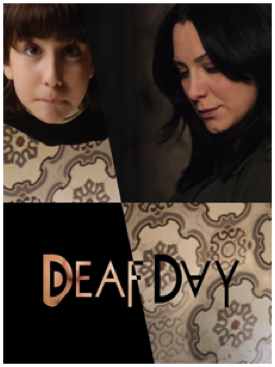
Figure 1: Poster for Deaf Day (Yom Samt, Rana Kazkaz and Anas Khalaf, 2011),
a film about Laith, a deaf actor from Kafr Batna, Damascus. Les Films de Zayna and Synéastes Films, 2011. Photo credit: Palmyre Badinier 2011.
Soon after completing the film, the situation in Syria rapidly and violently deteriorated, and we decided it would be best if my husband Anas stayed in Syria while our children and I moved in with my parents in the Chicago suburbs. Before leaving, I registered the kids for school in the autumn. I packed only one suitcase, believing we would be back a month or so later, after things had subsided. Thousands of miles, oceans, time zones and a world began to separate my husband and me.
Despite the distance, we began to develop another film together, which we called The Translator (Rana Kazkaz and Anas Khalaf, 2020). Although living apart and in conflict with one another, we felt the need to make a film in testament to the horrors that had played out in the first months (March–May) of the Syrian Revolution. We supported the peaceful demonstrations, but had kept our distance, afraid of the potentially deadly consequences associated with participating. For us, the first few months of the Revolution were symbolised by the desperate hope that Syria would become free. It was a moment when anything felt possible—when Syrians believed, like other Arab Spring revolutionaries, that emancipation and democracy were within reach. Iraq’s Saddam Hussein was dead; Libya’s Muammar Gaddafi was on the run and would soon be dead; Tunisia’s Zine El Abidine Ben Ali had fled to Saudi Arabia; and Egypt’s Hosni Mubarak had been detained and would soon be tried. The international community had played a significant part in dethroning all four leaders. It is understandable why the Syrians believed that the international community would intervene and help them overthrow the Assad regime. But fear and violence quickly eroded that belief and radicalisation and war became horrifically encompassing.
One year later, Anas joined us and we moved to our own place in Chicago, both of us eager to be a family again. We felt a mixture of guilt and relief. Our family members and friends, who did not have foreign passports, remained in Syria. Many of them were arrested, kidnapped and tortured. Our apartment was bombed. The children’s playroom was obliterated. Despite the chaos, we soon began to feel restless and eager to get back to the region. If we were going to tell Syrian stories, then we needed to be nearby. We moved to Amman, Jordan, and continued developing The Translator. Like us, our film company, Synéastes, would continue to operate in exile.
The Translator tells the story of Sami, a translator who has been living in exile in Australia for eleven years, but who makes the choice, despite the obvious risks it entails, to return to Syria to find his brother who has been arrested by the regime for participating in a peaceful demonstration. Sami represents my husband and I or, more precisely, a projection of the commitment we wish we had, and that pushes us to question our own responsibility for what was and is happening in Syria. Like my husband and I, Sami flees; he uproots himself to live in freedom, but cannot live with the fact that his country and its people cannot share his freedom. We allow Sami time in the narrative to progress in his attempts to find his brother, but little by little he finds that he is led towards a deeper quest: to find his own voice. This quest leads him to a gesture of final resistance, in which he chants along with Syria’s peaceful protestors, “We want freedom. We want dignity.” This might seem meaningless when compared to the scale of the revolution, but this choice causes him to lose his life, at the same time as it preserves his family’s dignity. His final act represents the determination of a people, who are ready to break the war machine in the hope that democracy will endure.
While some very important documentaries have already been made by Syrian filmmakers—such as The Return to Homs (Talal Derki, 2013), Silvered Water, Syria Self-Portrait (Ma’a al-Fidda, Ossama Mohammed and Wiam Bedirxan, 2014), Last Men in Aleppo (De sidste mænd i Aleppo, Feras Fayyad, 2017) and Of Fathers and Sons (Kinder des Kalifats, Talal Derki, 2018), all of which show the violence and destruction that have shaped the path of many Syrians in the conflict—our wish was to “dramatise” the Syrian quest for dignity and freedom through fiction. We have always been inspired by narrative political films from the 1970s and 1980s, especially those by Costa-Gavras, such as Z (1969) and Missing (1982). Notably, these films are also thrillers, which hold the audience’s attention throughout. The narrative form allows us the freedom as filmmakers to consider creatively the emotional experience we want audiences to have, giving them the opportunity to engage with politics on a subconscious level. Ultimately, this film is meant to be a tribute to our people—to the women, men and children who have used their voices to say that they deserve to live in freedom with dignity.
Friends Decide to Cross the Sea
For The Translator, we wanted to cast Syrians who had lived through and participated in the Revolution. We knew professional Syrian actors who had received refugee status and were now living in France or Germany after being forced to flee Syria for participating in the uprising. These Syrian actors are Sunni, Alawite, Christian and atheist. The non-Sunni actors had interfered with Assad’s regime’s portrayal of the revolution as a Sunni Islamist uprising, rather than the multisectarian, multiclass, democratic, peaceful movement it initially was. We also wanted to cast nonprofessional Syrian actors in order to supplement their often-meagre incomes and provide them with the opportunity to testify and create a film about the revolution in which they had participated. We held auditions and organised an acting workshop led by a well-known Syrian acting teacher, Fadi Skeiker, who was a professor of theatre at the University of Jordan. The European Union heard about the project and gave us a small grant to turn the workshop into a documentary, which we titled Searching for the Translator (Rana Kazkaz and Anas Kahlaf, 2015). For this workshop/documentary, we auditioned around thirty-five Syrian refugees living in Jordan and finally cast a group of twelve, with the intent of training them to act in The Translator. However, instead of learning how to become professional actors, the twelve participants took the workshop into their own hands and used it as an opportunity to therapeutically share their experiences of fear and courage during the Syrian conflict, as well as to explore how a new Syria might, one day, be rebuilt.
Filming of the documentary took place in April 2015 and, when the cameras were not rolling, the main topic of conversation was the sea. Who was thinking of crossing the Mediterranean? Who could swim? Was it worth the risk? Of the twelve actors, three eventually decided to take their chances. They went to Turkey and paid for a spot on one of the migrant boats that would—they hoped—take them to Greece. Two of them, Safa and Tarek, ended up having to throw all their possessions overboard in the hopes it would stop the boat from sinking. Another, Fahad, made four attempts before finally making it. Fahad recounted in detail how they would have to cross at night, crawling on their knees. The first three attempts did not work because the boats always ended up sinking on the way, burdened by an excess of people, and so the refugees would have to return to the Turkish shores. Now, Safa, Tarek and Fahad are in Germany. Safa is learning German and writing her memoirs. I will never forget a scene in the documentary where she recounts why she chose to participate in the peaceful demonstrations and then why she stopped: “I wanted my freedom, but I didn’t want to die.” Tarek was reunited with his wife, who was already in Germany. Fahad is now in acting school in Stuttgart. In the documentary, Fahad spoke from the heart, remembering the joy he had had participating in the peaceful demonstrations, in which he would chant along with the others: “Wahed wahed wahed, sha’ab soori wahed.” One, one, one, the Syrian people are one.
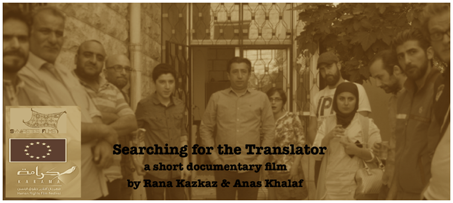
Figure 2: Poster for Searching for the Translator (Rana Kazkaz and Anas Khalaf, 2015)
featuring twelve Syrian actors who were living as refugees in Jordan.
Synéastes Films, 2015. Photo credit: Ghassan Nazmi 2014.
One evening, while filming the documentary, my husband and I went to a dinner party and the conversation turned to the situation of refugees and migrants crossing the sea. I listened to words of compassion, but I also heard judgment: “They are selfish, such greed, they should stay where they are.” The judgment was hard to hear. The refugees’ motivations were misunderstood. A night soon after, Anas and I were at home watching yet another news report about a tragedy taking place in the Mediterranean Sea. On this particular day, it was estimated that roughly eight hundred people were assumed to have lost their lives. I felt helpless and was desperate for a creative outlet. After watching the news footage, I turned to Anas and said, “I have an idea for a short film. A father throws his son in the sea. No dialogue. Only at the end do we understand he was teaching him to survive.” Anas immediately told me to go and write it. “Except”, he said, “change the boy to a girl”.
The next day, while researching the situation in the Mediterranean Sea in preparation for writing the film, I came across a Wikipedia article about an emergency migrant rescue initiative called Operation Mare Nostrum that had been put in place by the Italian government in 2013. This operation was terminated one year later when, under pressure from the European Union, the Italian government joined a new joint initiative called Triton by Frontex. Whereas Mare Nostrum was clearly a rescue operation, the goal of Triton by Frontex was to safeguard European borders. This goal exposed the tragedies unfolding on the sea and their relationship to government policies. Mare Nostrum, Latin for “our sea”, is the name the Romans gave to the Mediterranean Sea. A perfect title, I thought. Twenty-four countries have coastlines on the Mediterranean Sea. Syria is one of them.
Assembling the Cast and Crew
The following month, May 2015, Anas was at the Cannes Film Festival, walking the red carpet for a film he had acted in called Dégradé (2015) by the famous Palestinian filmmaker twins, Arab and Tarzan Nasser. There, Anas bumped into Nicolas Leprêtre of Sombrero Films. The Sombrero producer Thomas Verhaeghe had collaborated with us on Deaf Day. At the time, Nicolas was a production assistant, but now he was forming a new production company, Georges Films, with his partner Raphaël Alexandre and they were looking to start out by producing short films. Anas pitched Mare Nostrum to them and it was an almost immediate “yes”. Georges Films would coproduce the film with Synéastes.
Raphaël knew immediately who should play the father: Ziad Bakri, who was playing a Syrian on the hit French TV show The Bureau (Bureau des Légendes, Éric Rochant, 2015). I googled Ziad, eagerly searching for video clips and, within minutes, I knew he was an amazing actor. He was exactly what I had imagined when conceiving the role of the father. We had found him. Next, Magali Negroni, the script consultant on the film, wanted to ensure that we worked with a top editor. She had just been working on a project and spoke of a woman who was a Cannes veteran and had edited most of Tony Gatlif’s films, as well as the award-winning Incendies (2010) by Denis Villeneuve, a film we loved for its powerful portrayal of Lebanese twins whose mother had suffered unspeakable trauma during the Lebanese Civil War. But, would she want to work with us? “We’re nobodies”, I reminded Magali. “Nobodies with a great script”, she kindly replied.
The recommended editor, Monique Dartonne, agreed to meet us. At the time, she was in Marseilles, editing Karim Dridi’s film Chouf, which would be screened at Cannes in 2017. Anas went to Marseilles. Monique told him in advance not to get his hopes up as she only edits feature films now. Short films, she said, are best left to young editors, eager to hone their skills. Nevertheless, he pitched Mare Nostrum to her. We have quoted her reaction a hundred times since: “I would have preferred not to like it.” She was on board.
Next, we needed to find the cinematographer. Anas recommended Eric Devin who was the director of photography on Dégradé. I loved the award-winning On the Edge (Sur la Planche, 2011), which Devin had filmed alongside his wife, the Franco-Moroccan director Leïla Kilani. I asked if we could meet with the producer of Dégradé, Rashid Abdelhamid, to get his opinion. When we explained to him that we needed someone who would use a handheld camera only, Rashid said the magic words: “Eric’s your man. He’s a beast. He can hold the camera all day long.” A beast. It is not easy to find a cinematographer who is willing to use a handheld camera all day long, because it is physically demanding. What I love about Eric’s camerawork is that it feels effortless and easy. Most importantly, he loves using intimate extreme close-ups, which are my visual preference. He was also willing to learn how to scuba dive to be able to get the underwater shots. His expert understanding of natural light helped capture both the fear and intimacy in the film and his images conveyed an emotional honesty and intensity that is simultaneously striking and moving.
We still did not have the daughter. I felt as if the role of the father had been written for Ziad. His look, mannerisms and talent were exactly what we needed. But now we needed to find the little girl to play the daughter. We asked our daughter Zayn, but she was not interested, plus the French producers did not feel that it was a good idea for us to cast a family member, so we held auditions. We saw about twelve girls and one of them, Mia, was perfect. Small, wild and curly haired, she possessed the same traits as our own daughter. We cast Mia and invited Ziad to our home in Amman to meet her. However, it was immediately apparent that there was no chemistry between them. Mia wanted nothing to do with Ziad, despite his persistent and noble efforts. However, Zayn and Ziad’s chemistry was palpable from the get go. Perhaps Zayn felt a sense of competition or regret at having turned down the role as she wanted to play the daughter. Since it was clear that we had made a casting mistake with Mia, we apologised to her parents and told Ziad that we had decided to cast Zayn instead. Secretly, he had been hoping we would, and it is one of the things we are most proud of in the film. Ziad and Zayn manage to seem like a real father and daughter.
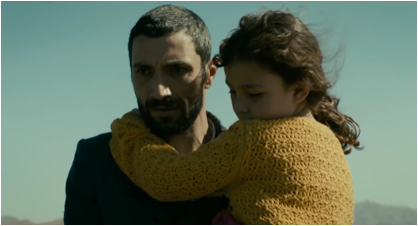
Figure 3: Ziad Bakri and Zayn Khalaf play the father and daughter in Mare Nostrum
(Rana Kazkaz and Anas Khalaf, 2016). Georges Films, Synéastes Films, 2016. Photo Credit: Eric Devin.
The Location
We knew three things were important when deciding the location. First, we had to find a place that looked like the shores of Çeşme, Turkey, where many Syrians began their perilous trek across the sea. Second, we had to find somewhere that looked like Greece was visible in the distance. Finally, we needed a pier. Not just any pier, but a pier that was long and worn—a pier from which the father would throw his daughter into the sea. The pier was our visual centrepiece and so it had to be the right one.
First, we thought about filming in Jordan. It would be convenient as we were living there, but then we would have to use the Red Sea, not the Mediterranean Sea. Next, we considered the south of France. As many of our key crew and producers were going to be travelling from France, perhaps we could save money by filming there. Or, should we go to the actual location and film in Turkey, a country where no-one was living? It would be the most expensive option, but also the most authentic.
We began with the cheapest and easiest option: the shores of Jordan’s Red Sea. We dropped the kids off at school at 8 a.m. and started the four-hour drive from Amman to Aqaba, Jordan’s major city on the Red Sea. We arrived and immediately went to the main beach. There were piers. One in particular looked promising. However, it was a very crowded beach: there were hundreds of people, hundreds of children, hundreds of items littering the sand and the sea. Filming there would be a challenge. We asked the local fishermen if there were more piers. They pointed us towards the border with Saudi Arabia. Eventually, we came upon Public Beach No. 1. There was a pier, but it was too short. Public Beach No. 2 also had a pier, but there were railings on the sides of it that did not seem cinematic. The railings also gave a sense of protection and safety, and that was certainly not what we wanted to convey. The pier at Public Beach No. 3 was unremarkable and there were only two more to go. Minutes later we were at Public Beach No. 4. The pier was impossibly long, thin, jetting far out into the water. Old and battered, it seemed grossly neglected. And, as for the beach, it was almost empty, aside from some visually interesting beach umbrellas that were ripped and torn. Like with Ziad, it was the pier I had imagined. I had not imagined that it would also have a gateway—a kind of doorway—that was strangely placed as one does not need to go through it to enter the pier. Yet, that is precisely what we ended up having the father do in the film. The pier was cinematic. Anas, a talented photographer, took photos.
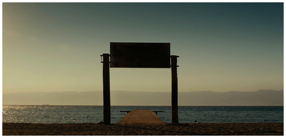
Figure 4: The gate to the pier. Production still taken from film footage. Photo credit: Eric Devin.
In the distance, across the water, Egypt loomed. Would it work? Could Aqaba look like Çeşme? Could Egypt pass for Greece? We sent the photos to Nicolas and Raphaël. There was no need to see Public Beach No. 5. There was no need to consider France or Turkey. There was no need to look any further.
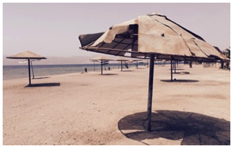
Figures 5–8: Photos from our initial location scout in Aqaba, Jordan on the Red Sea. Credit: Anas Khalaf.
The Artistic StatementMare Nostrum took shape before the tragedies occurring in the Mediterranean Sea were being discussed in the media in the way they are now. However, the unfortunate increase in the number of tragedies and the magnitude of the refugee/migrant situation made the project more essential than ever. Mare Nostrum is a story about a father, his little girl and the Mediterranean Sea; three characters who come together in order to show that love exists even in the midst of violence. This dramatic tale also highlights how the Mediterranean Sea, “our sea”, can be an inalienable component of a “Mediterranean” identity, an identity that can unify the Mediterranean people, as well as cause their separation. Mare Nostrum is a cry of despair from a father who wants to save his daughter, and is prepared to make the ultimate sacrifice to achieve this goal. But it is also a call for a better life, without violence, without war. For, although war is absent from the film, it is ultimately what it is about. This film wants to evoke the events that are playing out on the Mediterranean Sea before the eyes of the world. Watching the daily footage of Syrian and other migrants escaping war-ravaged countries, risking their lives aboard ill-equipped ships, horrifies as well as humbles us. Anas and I know how easily we might have found ourselves amongst them. All that separated us from them was our passports.
We chose to open our story on a popular beach in order to immediately portray the contrast between those who see the sea as a source of pleasure and those who see it as a source of danger and contemplate crossing it illegally. This battle wages itself until the final moment of the film when a television news journalist announces that a small Syrian girl is one of the only survivors of the many who have drowned trying to cross the Mediterranean Sea. This little girl is our protagonist, the daughter. At this moment, the audience also understands that she has survived thanks to her father, who forced her to learn how to swim. In this final scene, the entire film is put into a new perspective, causing the viewer to reinterpret their initial understanding of the story and the father’s actions. This counterpoint is necessary as it serves as the foundation of the pretence at the heart of the story—the relationship between father and daughter. In the opening moment, the father and daughter seem united. However, a rift appears in their relationship when the father pushes his daughter into the sea. As a result, he appears violent and incomprehensible, creating a psychological barrier between his character and us as viewers. However, we soon learn that his actions are the result of a desperate attempt to save his child. Though unbearable for the viewer, the father’s gesture is a symbol of the desperation of migrants willing to risk everything and a reflection of wild hope. If the father and his daughter could survive such a journey, they would be able to reach a place where building a better life might be possible.
We did not want our characters to speak in order to accentuate their universality. However, the film is not mute. It comes alive through body language, the sounds of the omnipresent sea, and through cries and murmurs. We think of drowning as a thrashing, noisy horror. Yet, in reality, it is a silent, lonely, underwater experience. Sadly, many have drowned just inches away from another unsuspecting human being. This is the kind of silence we wanted to capture. We also wanted to build the story through repetition. The film repeats the same actions and images day after day. Like Sisyphus—the evil Greek king who was given the eternal punishment of repeatedly having to push a large rock up a hill—the father in our film must continually endure the pain of hurting his daughter for a reason not known to the viewer until the very end. This courage and sacrifice are what we wished to expose. And, unlike our characters, we did not want to remain silent, but rather to use this film to express our pain as the situation in Syria continues.
FinancingFinding funding is usually challenging, but, for the first time in my experience as a director, the funding for the film came together quickly. First on board was the Netherlands-based Prince Claus Fund who had just announced a one-year initiative to fund Syrian artists living in exile. Next, Nicolas and Raphaël sent the screenplay to Hélène Vayssières at ARTE Television, France. Although told it would take weeks for her to respond, she emailed within days asking for a meeting. She was ready to provide financing based solely on the script. That rarely happens. The British Council, the French Centre national du cinéma, Île-de-France and private donors also offered funds. There is, however, one body that chose not to give us funding. We met with two representatives from an EU organisation called ECHO, the European Civil Protection and Humanitarian Aid Operations. They read the script and loved it. However, they were unwilling to provide funding as they believed Europe was not ready to hold itself accountable for the crisis. Thankfully, we managed without the help of the EU.
Production
In preparing our daughter Zayn for the role of the daughter, we did several things. First, we showed her the news stories of children drowning in the sea. Many may criticise this parental decision, but my husband and I made a decision: if our cousins, including one who was arrested and tortured by the Syrian government for “having too many friends on Facebook”, did not have the privilege of protecting their children from the realities of war, then neither should we. Our children are of Syrian origin and it seems morally right to us that they should not be spared some of the horrific details of other Syrian children’s experiences. Second, we showed her my favourite film, Vittorio De Sica’s Bicycle Thieves (Ladri di biciclette, 1948), for her to see the stellar performance of the little boy. Incidentally, I always watch this film before I shoot anything. The humanity, performances and story break my heart every time. Zayn got the point right away. “I know why you showed me this film. Because, the little boy is like the little girl”, she rightly said. Third, we asked Zayn to express what she did and did not have in common with her character, who we decided to call Razan. They were both Syrian, six-years old, and had left Syria because of the war. However, Zayn knew how to swim, had an American passport (which allowed her to leave Syria easily), and had parents who had sufficient financial means to build a new life in another country. Finally, I took her to a swimming pool several times to practice drowning and here I made my biggest mistake. While rehearsing drowning, she always wore a swimsuit, but when it came time to film the scenes of her drowning, she wore a costume of proper clothes. Wearing clothes—a dress, a cardigan, and jeans—while drowning was very upsetting and uncomfortable for her.
With Ziad, we created a backstory. The father was a teacher. One day, he heard a rocket land and ran towards his home and discovered his dead wife. With nothing left except for the clothes on their backs, the father and his daughter left for Turkey. We spent a great deal of time discussing the costumes with the costume designer. They should be dirty and torn. They should appear too big for the father to signal how little he is eating. He should wear a slightly mismatched suit, as if he had grabbed whatever he could find out of his wardrobe. Being inappropriately dressed for the beach would make him look even more out of place.
Post
The idea behind putting the Associated Press (AP) footage at the end of the film was to remind the viewer that there are humans behind the statistics they hear. The next time they heard a report about the number of migrants who had drowned, we wanted them to remember our “six-year-old Syrian girl”. With Monique’s help, we pieced together five different AP news reports to create our own “news report”. I wrote the one line of dialogue/narration that is heard at the end of the film and Nadia Charbit, a journalist for the France 24 news channel, generously recorded the voiceover for us. The wordy news report was meant to contrast with all the previous scenes in which there is no dialogue. It is satisfying when audiences proclaim that they remember this news report as it never actually existed.
As for the score, we knew we wanted the famous Syrian clarinetist Kinan Azmeh to compose sparse, original music, which would enhance or counterpoint the film’s haunting universe, be stripped of all artifice, and serve as a sort of internal companion for the father. Azmeh composed three pieces for three separate sections of the film. However, after finishing the compositions, he felt that the film did not need any music at all. We ended up using only one of the pieces to mark the moment when the refugees are waiting in the dark of night for the boat that they hope will take them to Europe.
The Reaction
The intention was always to make the audience hate and judge the father. For better or for worse, we seem to have succeeded in this mission. Indeed, many festivals rejected the film as they felt that they could not empathise with the father. They remained glued to a position of judgement. One reviewer of film grant applications went so far as to say that the film was about a bad Muslim father. First, there is never any mention of the father’s religion and second, such a statement clearly means the story was misunderstood as the father is only ever filled with love for his daughter. And yet, it is easy to understand why viewers would not want to get to a point where they could understand the father’s actions. It would be unbearable. It would be an admission of how cruel the world is. Cruel. This is precisely the word Magali used to describe the film. Some people ask why the father could not have taught his daughter how to swim or have been gentler. First, that is not dramatically or visually interesting. Second, the father does not know how to swim. Third, and most importantly, I feel that such a question is asked because we want the situation the father and daughter are in to be kinder. But there is nothing kind about their situation. Some viewers expressed upset that we took them from the narrative story into a sort of docu-realism at the end of the film by using the AP footage. Others understood and were moved by it. Ultimately, I wanted to subvert the audience’s perspective by encouraging them to care about “fictitious” characters, only to be reminded that there are real people behind these stories.
In the end, if the subject matter of the film is tragic, the making of the film was an absolute joy. With over ninety international film festival selections, including Sundance, thirty-two prizes, including two for Zayn as Best Actress, and worldwide distribution, we are relieved and overjoyed that this film has been so well-received. Thrilled with how well Mare Nostrum went, we decided to assemble the same team for The Translator, which will be released in 2020.
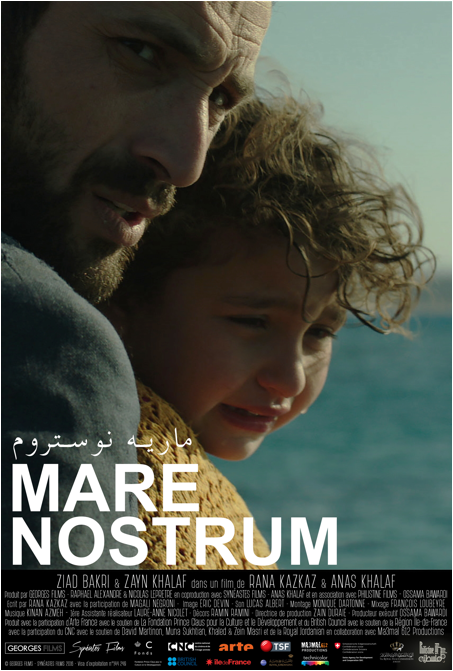
Figure 9: The poster for Mare Nostrum, listing all of the production and funding partners.
Georges Films, Synéastes Films. Photo credit: Eric Devin.
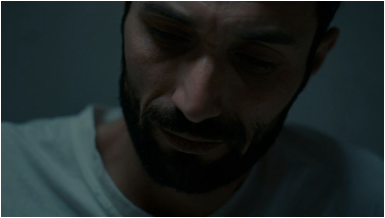
Figure 10 (top): The father gazing at Europe in Mare Nostrum. Figure 11 (middle): A look from the daughter to the father in Mare Nostrum. Figure 12 (bottom): Production still taken from film footage of Mare Nostrum. Georges Films, Synéastes Films. Photo credit: Eric Devin.
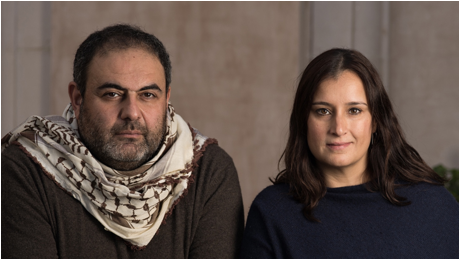
Figure 13: Filmmakers Anas Khalaf and Rana Kazkaz.
Photographed at the Dubai International Film Festival in 2017. Photo courtesy of DIFF.
Note
Requests to view or screen Kazkaz’s short film Mare Nostrum can be obtained by emailing rana.kazkaz@northwestern.edu.
References
1. Costa-Gavras, director. Z. Valloria Films, 1969.
2. ---. Missing. Universal Pictures, 1982.
3. De Sica, Vittorio, director. Bicycle Thieves [Ladri di biciclette]. Produzioni De Sica, 1948.
4. Derki, Talal, director. Of Fathers and Sons [Kinder des Kalifats]. Cinema Group Production, 2018.
5. ---. The Return to Homs. Proaction Film, 2013.
6. Dridi, Karim, director. Chouf. Tessalit Productions, 2017.
7. Fayyad, Feras, director. Last Men in Aleppo [De sidste mænd i Aleppo]. Proaction Film, 2017.
8. Kazkaz, Rana, and Anas Khalaf, directors. Deaf Day [Yom Samt]. Les Films de Zayna and Synéastes Films, 2011.
9. ---. Searching for the Translator. Synéastes Films, 2015.10. ---. Mare Nostrum. Georges Films and Synéastes Film, 2016.
11. ---. The Translator. Georges Films and Synéastes Film, 2020.
12. Kilani, Leila, director. On the Edge [Sur la Planche]. 2011.
13. Mohammed, Ossama, and Wiam Bedirxan, directors. Silvered Water, Syria Self-Portrait [Ma’a al-Fidda]. Praction Film, 2014.
14. Nasser, Arab, and Tarzan Nasser, directors. Dégradé. Les Films de Tambour, 2015.
15. “Operation Mare Nostrum.” Wikipedia.org. 1 Apr. 2019, en.m.wikipedia.org/wiki/ Operation_Mare_Nostrum. Accessed 21 Apr. 2019.
16. Py, Olivier, director. Méditerranées. Sombrero Films, 2011.
17. Rochant, Éric, director. The Bureau [Bureau des Legendes]. TOP–The Oligarchs Productions,
2015.18. Villeneuve, Denis, director. Incendies. TS Productions, 2010.
Suggested Citation
Kazkaz, Rana. “Refugee Status: Privileged.” Alphaville: Journal of Film and Screen Media, no. 18, 2019, pp. 145–159. https://doi.org/10.33178/alpha.18.11.
Rana Kazkaz is a Syrian-American filmmaker and Assistant Professor in Residence at Northwestern University in Qatar where she teaches narrative filmmaking. Her film Mare Nostrum was selected in over ninety film festivals and won over thirty prizes. Her next film, The Translator, takes placein March 2011,the start of the Syrian Revolution, when peaceful demonstrators used their voices to ask for freedom and dignity. Rana has an MFA from Carnegie Mellon University, a BA from Oberlin College and attended the Directing Workshop for Women at the American Film Institute. She lives in Qatar with her husband and two children.





